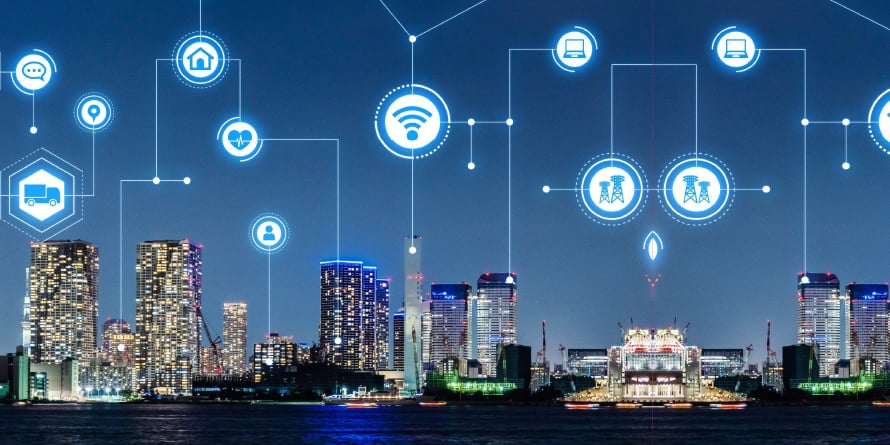Mobility Trends 2024 - what comes next?
In 2023, through the buzzing engines of vehicles, the echoes of the words “sustainability” and “MaaS” were heard, a refrain that resonated across both public and private transportation sectors, as well as within municipalities. The commuter preference majorly shifted towards greener, more convenient, contactless way of payments, with over 90% of commuters surveyed expected contactless payments in public transit, while MaaS market size reached over 221 bln USD in volume in 2023.
In 2023, we’ve talked about micro mobility, MaaS, User Experience and hyper-personalisation being the major areas of focus, in addition to the overarching theme of sustainability. Regions across the globe, including Latin America, the Middle East and Africa, Europe, and Asia-Pacific, experienced unique shifts in their smart city ecosystems, with massive megapolices losing in Smart Cities ranking to small high-tech cities, due to their complexity of transportation, urbanisation and volumes of passengers, despite the progress in sustainability and mobility improvements. During the year, O-CITY experts were engaged in many conversations and events across the regions, such as UITP events, industry major events and even gathered our own international mobility conference, where industry leaders APAC, MEA, Europe, LatAm shared their perspectives through series of panel discussions on integrated mobility, fare collection and upcoming trends.
So what’s coming?
As we move into 2024, the dynamics of urban mobility is being shaped by several market drivers, which pushes transport operators and municipalities to find a right fix in the upcoming year. The main motivators include potential cost savings on operations through data automation and reduced cash handling, steadily rising penetration of Internet , smartphones and bank digital products, and the pressing need for improved transportation infrastructure. In emerging markets, such as regions of LatAm, Oceania and Africa the shift towards cashless economies is gaining momentum, reflected in the increasing demand for contactless payments in public transportation.
So what do we see as coming trends in 2024?
Increase in available payment methods
We are witnessing the increase of interest in the innovative payment technologies such as mobile payments, wearables, biometrics, palm-based payments, and QR codes, which are already familiar in retail and banking sectors, have seamlessly transitioned into the public transportation sphere. Simultaneously, smartphone and Internet penetration pushes mobile wallets usage like WeChat, Venmo, Gcash or KakaoPay in South Korea, MercadoPago in Argentina and other local digital wallet apps, which could become dominant payment mediums in certain regions. Notably, in Africa, services like M-PESA have revolutionised payments, exemplified by Kenyan commuters using familiar USSD-based payments to fare on matatu buses.
 Vulindlela Moyo, Business Development Manager, Middle East & Africa, O-CITY, "The expanding variety of payment methods in public transportation, notably the integration with digital wallets, represents a significant leap forward. This evolution not only caters to a tech-savvy population but crucially includes unbanked segments in African markets. Here, the reliance on mobile payments over traditional card systems is not just a convenience but a vital access point to essential transport services."
Vulindlela Moyo, Business Development Manager, Middle East & Africa, O-CITY, "The expanding variety of payment methods in public transportation, notably the integration with digital wallets, represents a significant leap forward. This evolution not only caters to a tech-savvy population but crucially includes unbanked segments in African markets. Here, the reliance on mobile payments over traditional card systems is not just a convenience but a vital access point to essential transport services."
MaaS and On-Demand mobility
Over a third of the drivers today no longer want to own a personal vehicle. This percentage is even higher in rural areas and among the young people: 50%, which brings up the concept of MaaS, an integration of different transport services, such as public transport, ride-sharing, car-sharing, bike-sharing, scooter-sharing, taxi, car rental, ride-hailing in one single digital platform, with active mobility and real-time information. According to Juniper Research, MaaS will grow 326% by 2028, displacing over 3.3 bln card journeys in US, China, Japan, Germany and Italy combined.
Secondly, on-Demand mobility will continue to present significant advantages to commuters and municipalities, such as the decrease in private vehicle use, alleviation of traffic congestion, enhancements in sustainability, and improved comfort.
Integrated mobility
Many cities and local governments in 2023 grappling with the concept of digitalisation encounter a common challenge: their transportation operators and city services are often scattered, operating in silos with cash or closed-loop payment methods. Integrated mobility is emerging as a major trend in 2024, the idea of which is to unify diverse urban services under one digital umbrella, facilitating a seamless and smart city experience. The integration of services offers unmatched convenience and ease of payments, transforming urban landscapes into truly integrated, smart cities. With the right technology and platforms like O-CITY, what once seemed like a daunting task is now a solvable challenge, paving the way for a more interconnected and efficient urban future.
Automation beyond public transport
In 2024, the concept of automation extends beyond public transport, embracing parking and toll roads as integral parts of the smart city ecosystem. Several cities have already implemented automated parking solutions, enhancing convenience and reducing congestion. For example, a smart parking project in Penang city in Malaysia, which has led to a notable 50% reduction in the time drivers spend searching for parking spots. The automation not only decreases the volume of vehicles circulating and hence, mitigates pollution and traffic congestion but also enhances the overall parking experience. Similarly, toll road projects are adopting automated systems, leading to smoother traffic flow and enhanced efficiency in toll collection.
Next level of Data Management and City services automation
Synchronisation of AFC systems with transit-related technologies like real-time tracking and passenger information systems, and Intelligent Transportation Systems (ITS), coupled with open APIs for seamless integration, is becoming more prevalent. The advancement in data management has brought about significant improvements in real-time tracking and mobile apps for commuters. These apps not only offer real-time tracking of buses, rail, and metro but also provide historical data analysis, helping commuters to build the best possible routes quickly and easily. This level of data integration and management will transform the user experience, making public transportation more accessible and efficient.
 Javier Rios, Client Director AFC, O-CITY, "The momentum of the automation of on-street parking solutions, pioneered in European systems, is now accelerating towards Latin America, a region with the third highest car ownership rate (0.22 per capita) globally. This significant shift towards digitalization in city services, a reflection of Europe and the US's proactive technological strides, is not just about modernising parking services. It's an integral part of the smart city blueprint, aiming to unify and streamline urban mobility. By reducing congestion and easing transit times, this transition is set to markedly improve traffic flow and elevate the quality of life in Latin American cities, echoing the successes seen in its global counterparts."
Javier Rios, Client Director AFC, O-CITY, "The momentum of the automation of on-street parking solutions, pioneered in European systems, is now accelerating towards Latin America, a region with the third highest car ownership rate (0.22 per capita) globally. This significant shift towards digitalization in city services, a reflection of Europe and the US's proactive technological strides, is not just about modernising parking services. It's an integral part of the smart city blueprint, aiming to unify and streamline urban mobility. By reducing congestion and easing transit times, this transition is set to markedly improve traffic flow and elevate the quality of life in Latin American cities, echoing the successes seen in its global counterparts."
The road ahead
In 2024, the journey will begin with overcoming the current challenges. It will be crucial for operators to adapt and innovate. Integrating diverse systems often leads to interoperability issues and compatibility challenges, resulting from a fragmented IT landscape, which both municipal and private operators should seek to resolve in order to reduce costs and build a unified seamless payment environment. This can be achieved through a modern automated fare collection solution with account-based properties, that allows to keep all the data in the secure cloud data centre and effortlessly manage all fares through all channels centrally.
While the high implementation costs for AFC systems are primarily driven by investments in hardware, some AFCs, such as O-CITY, possess infrastructure neutrality, meaning those are compatible with any hardware, allowing operators to keep what they have, significantly reducing the costs. For public transport operators to thrive in this dynamic environment, overcoming these hurdles while focusing on enhancing user experience and embracing technological advancements will be essential.




